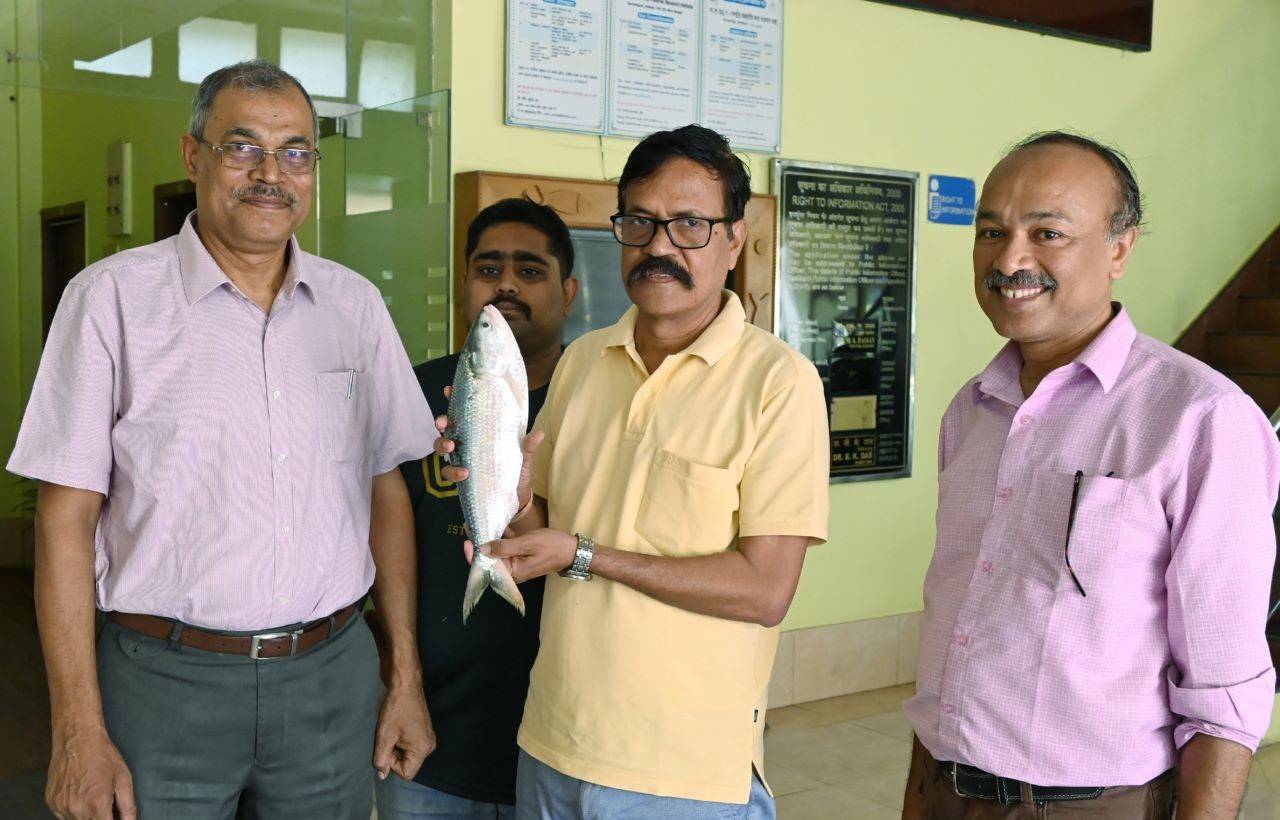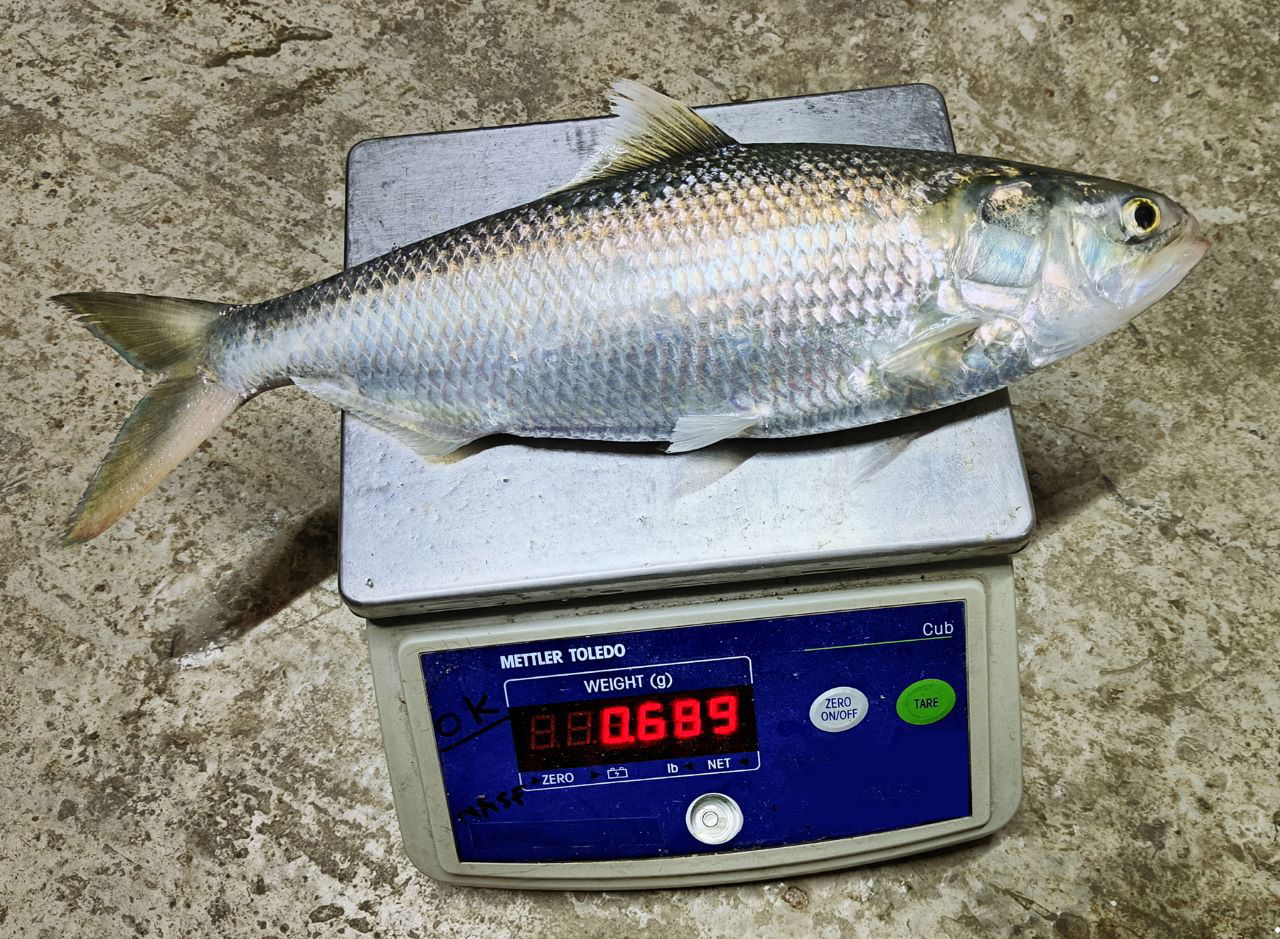
Researchers and aquaculture enthusiasts have long been captivated by the Hilsa (Tenualosa ilisha), a cherished fish of Southeast Asia. Recent efforts supported by the Government of India, notably through multi-institutional projects under ICAR-NASF, have aimed to bring this prized species into aquaculture.
A key objective under the ICAR-NASF phase II project was the development of Hilsa broodstock. Juveniles of Hilsa were nurtured in ponds across different zones—freshwater at Rahara (ICAR-CIFA), brackishwater at Kakdwip (ICAR-CIBA), and an intermediate zone at Jamitya village in Kolaghat, West Bengal (ICAR-CIFRI).
These broodstock ponds receive water from the River Rupnarayana, a tributary of the Ganga, at Kolaghat. Encouraging growth and survival rates were observed at the two pond culture facilities. Notably, during recent monitoring, a Hilsa fish weighing 689 grams and measuring 43.6 centimeters was recorded in Kolaghat after 3 years of rearing.

This achievement marks the highest size reported from any such attempt in India. The growth of pond-reared Hilsa surpasses that of those in open waters, indicating promising potential for Hilsa aquaculture. The fish were provided with their preferred diet of live zooplankton alongside specially formulated feed.
Water quality in these ponds is characterized by nearly freshwater conditions with a salinity of about 0.4-0.5 ppt and a conductivity of 800-1000 µS/cm. The water is slightly alkaline (pH 7.4-7.5) with adequate dissolved oxygen levels (7.4-7.5 mg/l). This success story underscores the feasibility of successful captive Hilsa culture given proper pond management.
The findings offer exciting prospects for the future of Hilsa aquaculture, shedding light on new possibilities for sustainable fish farming and conservation efforts.
















